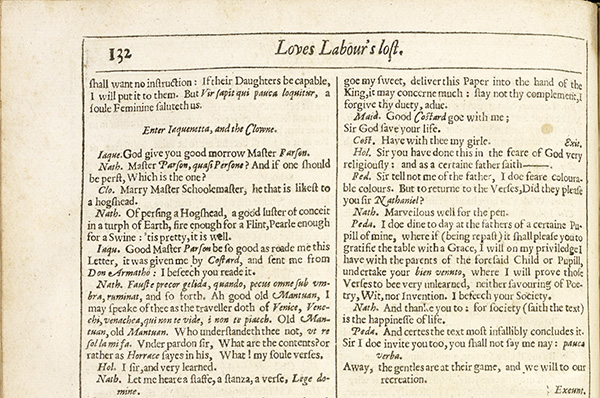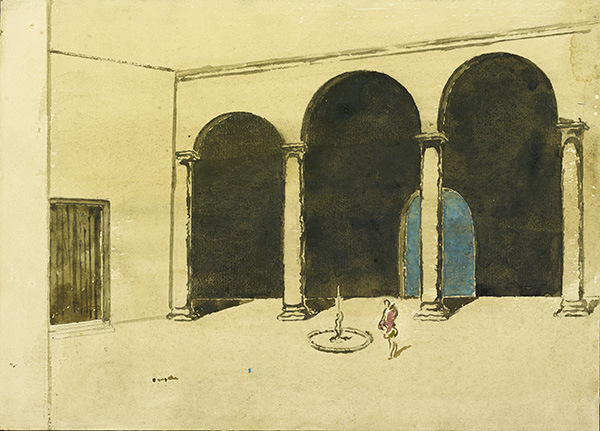We are pleased to announce the opening of a new exhibit from the Special Collections Library: Shakespeare on Page and Stage: A Celebration (Audubon Room, January 11-April 27, 2016). The exhibit is a historical journey through different versions of Shakespeare’s plays as they were edited for publication or interpreted for the stage. Starting with the Second Folio (1632), our display includes a selection of landmark editions by authors and scholars like John Dryden, Nicholas Rowe, Alexander Pope, Samuel Johnson, and Edmond Malone. It explores the staging and costuming of productions such as Charles Kean’s archaeologically-informed, elaborately-costumed 1856 production of The Winter’s Tale, and Maurice Browne-Ellen Van Volkenburg 1930 production of Othello, casting Paul Robeson as the first black actor to play Othello on the London stage in a century. It also includes an extraordinary multi-media feature in the form of a selection of video clips of famous film adaptation of Shakespeare's plays.
Exhibit Curators, Pablo Alvarez and Juli McLoone, will give a talk about the making and content of this display, followed by a reception, at the Hatcher Graduate Library on January 22, 2016 (4:00-6:30). This exhibit and talk are part of a series of nationwide events to commemorate the four-hundredth anniversary of the death of William Shakespeare.
While the First Folio is a great edition full of novelties and relevant corrections, the printers of the later folios (second, third, and fourth) merely corrected typos and, overall, modernized the language of Shakespeare. Only occasionally, we find substantial corrections. For instance, one of the compositors of the Second Folio emended the bad Latin of Love’s Labor’s Lost 4.2.91 to the correct Fauste precor gelida, quando, pecus omne sub umbra, ruminat, the opening line of the Eclogues by Baptista Manuanus. See image below to illustrate this point.

Section of a page from William Shakespeare (1564-1616) Mr. William Shakespeares comedies, histories, and tragedies : Published according to the true original copies (London: Thomas Cotes, 1632) The Second Folio
Early illustrated editions often provide us with a unique window to an actual staging of a Shakespeare's play. See the plate with Hamlet and his mother playing the closet scene; Hamlet has overthrown his chair as he leaps up at the apparition of his father, a theatrical effect probably invented by the great actor Thomas Betterton, who assisted Rowe with his edition.

Nicholas Rowe, editor (1674-1718). The works of Mr. William Shakespear : in eight volumes ; adorn'd with cutts / revis'd and corrected, with an Account of the life and writings of the author. Vol. 5 (London: Jacob Tonson, 1714)

Photograph of Ellen Van Volkenburg's marionette production of A Midsummer Night's Dream, ca. 1924. Ellen Van Volkenburg and Maurice Browne Papers, 1772-1983

Stage Design by James Pryde for Ellen Van Volkenburg and Maurice Browne's London production of Othello, ca. 1930. Van Volkenburg-Browne Collection
Note: WHose there? is the opening line of Hamlet as printed in the second quarto (1604) in a copy held at the Folger Library